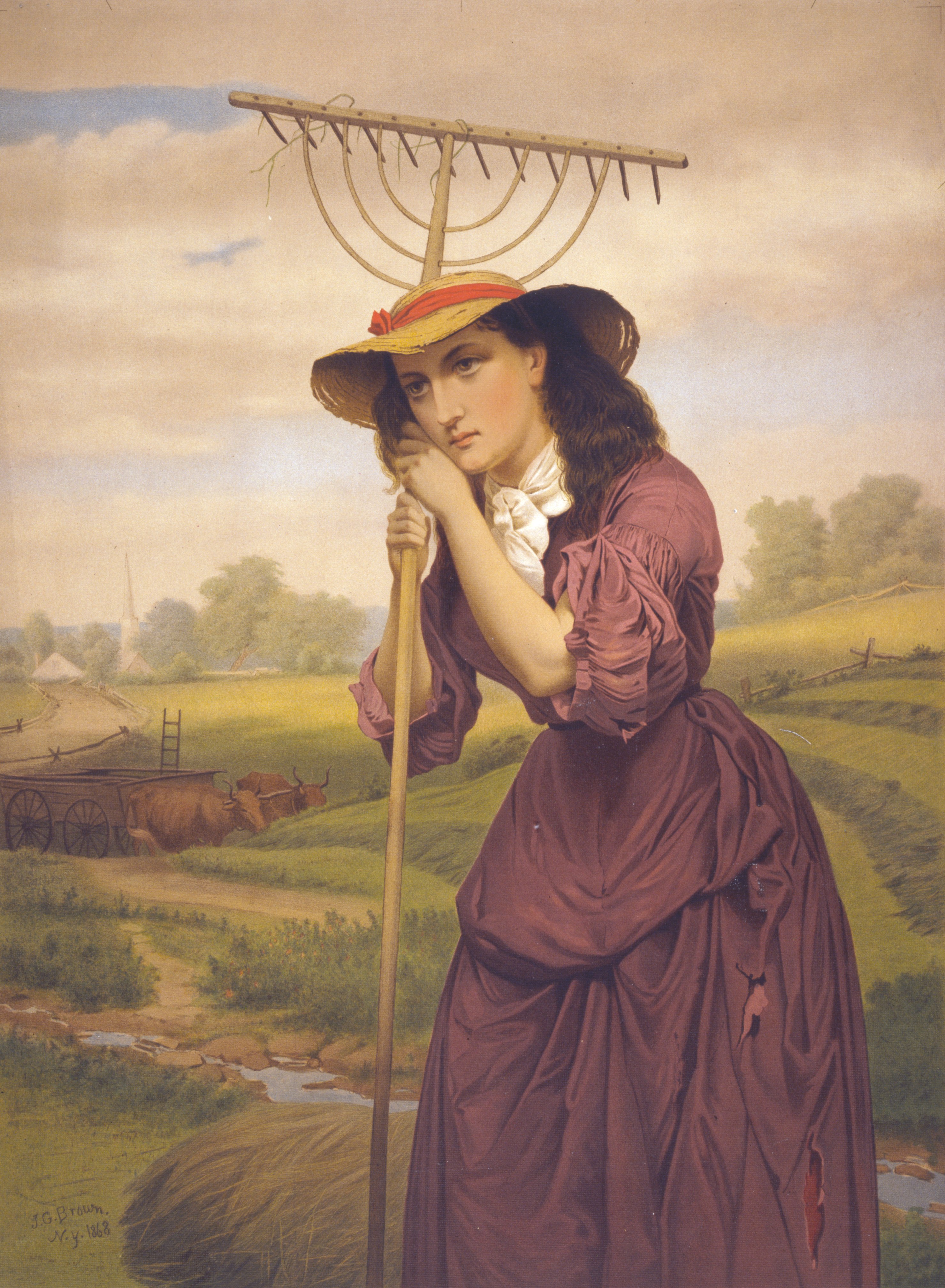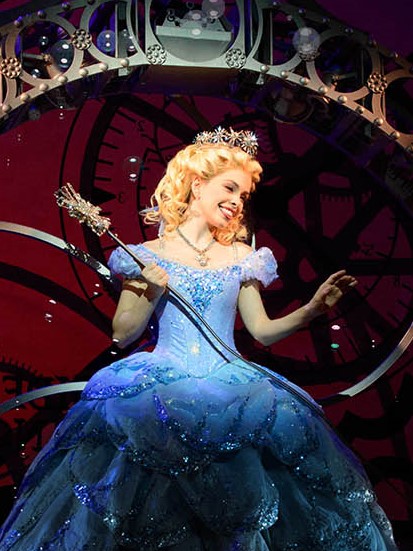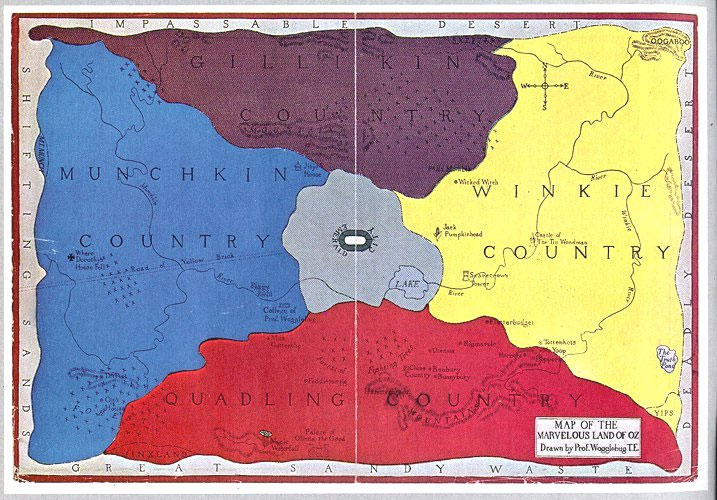|
The Woggle-Bug (musical)
''The Woggle-Bug'' is a 1905 Musical theatre, musical based on the 1904 novel ''The Marvelous Land of Oz'' by L. Frank Baum, with book and lyrics by the author and music by Frederic Chapin that opened June 18, 1905 at the Garrick Theater (Chicago), Garrick Theater in Chicago under the direction of Frank Smithson, a Shubert Organization employee. The musical was a major critical and commercial failure, running less than a month. Chapin, however, had proven quite saleable to the publisher, Tams-Witmark, M. Witmark and Sons, and many of the songs were published. The music director was Frank Pallma. The surviving sheet music was published by Hungry Tiger Press in 2002. Background After the success of ''The Wizard of Oz (1902 musical), The Wizard of Oz'' on Broadway theatre, Broadway in 1903, Baum set out immediately to write a sequel, ''The Marvelous Land of Oz; Being an Account of the Further Adventures of the Scarecrow (Oz), Scarecrow and the Tin Woodman'', which was published i ... [...More Info...] [...Related Items...] OR: [Wikipedia] [Google] [Baidu] |
Frederic Chapin
Frederic Chapin (December 1, 1873 – December 27, 1947) was an American screenwriter and composer. His name was also written as Frederick Chapin. He wrote the theatre music, scores for several Broadway musicals. In addition he worked writing screenplays during the silent era, silent and early sound eras. Biography Chapin was born in Cleveland, Ohio in 1873. His popular work ''The Storks (musical), The Storks'' (1902) with Guy F. Steeley led to his work with L. Frank Baum, as he was recommended by Tams-Witmark, M. Witmark & Sons, the publisher. Chapin is best known for his work with Baum on ''The Woggle-Bug (musical), The Woggle-Bug'', a 1905 Musical theatre, musical based on Baum's novel, ''The Marvelous Land of Oz''. He also wrote songs with lyricist Arthur Gillespie, two of which appeared, credited to Baum, in ''The Woggle-Bug''. His other stage works include ''Pussy in a Corner'' (1904), ''The Forbidden Land'' (1904), ''The American Girl (play), The American Girl'' (1906), an ... [...More Info...] [...Related Items...] OR: [Wikipedia] [Google] [Baidu] |
Dorothy Gale
Dorothy Gale is a fictional character created by the American author L. Frank Baum as the protagonist in many of his ''Oz'' novels. She first appears in Baum's classic 1900 children's novel '' The Wonderful Wizard of Oz'' and reappears in most of its sequels. She is also the main character in various adaptations, notably the 1939 film adaptation of the novel, '' The Wizard of Oz''. In later novels, the Land of Oz steadily becomes more familiar to her than her homeland of Kansas. Dorothy eventually goes to live in an apartment in the Emerald City's palace but only after her Aunt Em and Uncle Henry have settled in a farmhouse on its outskirts. Dorothy's best friend Princess Ozma, ruler of Oz, officially makes her a princess of Oz later in the novels. Appearances In literature In the Oz books, Dorothy is raised by her aunt and uncle in the bleak landscape of a Kansas farm. Whether Aunt Em or Uncle Henry is Dorothy's blood relative remains unclear. Uncle Henry makes reference t ... [...More Info...] [...Related Items...] OR: [Wikipedia] [Google] [Baidu] |
Maud Muller
"Maud Muller" is a poem from 1856 written by John Greenleaf Whittier (1807–1892). It is about a beautiful maid named Maud Muller. One day, while harvesting hay, she meets a judge from the local town. Each is smitten with the other. The judge thinks that he would like to be a local farmer married to Maud, while she thinks that she would like to be the wealthy judge's wife. Neither voices these thoughts, however, and both the judge and the maiden move on. The judge marries a woman of wealth whose love for him is based on his riches. Maud Muller marries a young uneducated farmer. Throughout the rest of their lives, each remembers the day of their meeting and remorsefully reflects on what might have been. This poem contains the well-known quotation: "For of all sad words of tongue or pen, The saddest are these: 'It might have been!'" Whittier's younger contemporary Bret Harte wrote a short parody and sequel A sequel is a work of literature, film, theatre, television, music, ... [...More Info...] [...Related Items...] OR: [Wikipedia] [Google] [Baidu] |
Jinjur
General Jinjur is an antagonist in the 1904 novel '' The Marvelous Land of Oz''. She is a character in the Oz books by L. Frank Baum and his successors.Jack Snow, ''Who's Who in Oz'', Chicago, Reilly & Lee, 1954; New York, Peter Bedrick Books, 1988; pp. 109-10. Biography Jinjur first appears in ''The Marvelous Land of Oz'' as a self-appointed general leading an "Army of Revolt"—an all-woman force seeking to end the reign of the Scarecrow and take over the Emerald City. The revolt is a parody of the contemporaneous movement for women's suffrage, which Baum supported (his mother-in-law was prominent suffragist Matilda Joslyn Gage). General Jinjur's followers use both violence (sharp knitting needles) and their feminine privileges to gain advantage: no man will hit a pretty girl, and Jinjur boasts "there is not an ugly face in my entire Army." Yet those same young women are temporarily routed by an incursion of mice. Jinjur's regime assigns Emerald City husbands to domestic ta ... [...More Info...] [...Related Items...] OR: [Wikipedia] [Google] [Baidu] |
Yokel
Yokel is one of several derogatory terms referring to the stereotype of unsophisticated country people. The term is of uncertain etymology and is only attested from the early 19th century on. Yokels are depicted as straightforward, simple, naïve, and easily deceived, failing to see through false pretenses. They are also depicted as talking about bucolic topics such as cows, sheep, goats, wheat, alfalfa, fields, crops, and tractors to the exclusion of all else. Broadly, they are portrayed as unaware of or uninterested in the rest of the modern world as it remains outside their own surroundings. In the UK, yokels are traditionally depicted as wearing the old West Country/farmhand's dress of straw hat and white smock, chewing or sucking a piece of straw and carrying a pitchfork or rake, listening to " Scrumpy and Western" music. Yokels are portrayed as living in rural areas of Britain such as the West Country, East Anglia and the Yorkshire Dales. They speak with country di ... [...More Info...] [...Related Items...] OR: [Wikipedia] [Google] [Baidu] |
Democratic Party (United States)
The Democratic Party is a Centre-left politics, center-left political parties in the United States, political party in the United States. One of the Major party, major parties of the U.S., it was founded in 1828, making it the world's oldest active political party. Its main rival since the 1850s has been the Republican Party (United States), Republican Party, and the two have since dominated American politics. The Democratic Party was founded in 1828 from remnants of the Democratic-Republican Party. Senator Martin Van Buren played the central role in building the coalition of state organizations which formed the new party as a vehicle to help elect Andrew Jackson as president that year. It initially supported Jacksonian democracy, agrarianism, and Manifest destiny, geographical expansionism, while opposing Bank War, a national bank and high Tariff, tariffs. Democrats won six of the eight presidential elections from 1828 to 1856, losing twice to the Whig Party (United States) ... [...More Info...] [...Related Items...] OR: [Wikipedia] [Google] [Baidu] |
Fred Mace
Fred Mace (August 22, 1878 – February 21, 1917) was a comedic actor during the silent era in the United States. He appeared in more than 150 films between 1909 and 1916. Mace worked for Mack Sennett at Keystone Studios. Shortly after he left, Roscoe Arbuckle, who had appeared in a few pictures at Keystone with Mace, took over as Sennett's lead comedic actor. Before Mace began working in films he acted on stage. Broadway productions in which he appeared included '' A Chinese Honeymoon'' (1904) and '' Piff! Paff!! Pouf!!!'' (1904). He left the stage in 1909 to begin making films. Mace was born in Philadelphia, Pennsylvania, and died of apoplexy on February 21, 1917, at the Hotel Astor in New York City. He was buried in a family plot in Morristown, New Jersey. All of his work is in the public domain. Selected filmography * '' The Lucky Toothache'' (1910) * '' The Villain Foiled'' (1911) * '' Her Awakening'' (1911) * '' Why He Gave Up'' (1911) * '' At It Again'' (1912) * '' A ... [...More Info...] [...Related Items...] OR: [Wikipedia] [Google] [Baidu] |
Patois
''Patois'' (, same or ) is speech or language that is considered nonstandard, although the term is not formally defined in linguistics. As such, ''patois'' can refer to pidgins, creoles, dialects or vernaculars, but not commonly to jargon or slang, which are vocabulary-based forms of cant. In colloquial usage of the term, especially in France, class distinctions are implied by the very meaning of the term, since in French, ''patois'' refers to any sociolect associated with uneducated rural classes, in contrast with the dominant prestige language ( Standard French) spoken by the middle and high classes of cities or as used in literature and formal settings (the " acrolect"). Sociolinguistics is the discipline that studies the relationship between these language varieties, how they relate to the dominant culture and, in the case of France, to national language policy. Etymology The term ''patois'' comes from Old French (originally meaning ), possibly from the verb , from ... [...More Info...] [...Related Items...] OR: [Wikipedia] [Google] [Baidu] |
Mombi
Mombi is a fictional character in L. Frank Baum, L. Frank Baum's classic children's series of Oz Books. She is the most significant antagonist in the second Oz book ''The Marvelous Land of Oz'' (1904), and is alluded to in other works. Mombi plays a very important role in the fictional history of Oz. The character was originally presented as a lowly hag who had enchanted Princess Ozma in order to prevent her from ascending to the throne. Later in the series, Baum specified that she had once conquered and ruled the Gillikin Country, as the Wicked Witch of the North, only to be deposed by the Good Witch of the North (Baum), Good Witch of the North. Furthermore, Mombi had enslaved Ozma's father (Pastoria, King Pastoria) and grandfather, thereby removing the Royal Family of Oz, and enabling herself and the Wicked Witches of the East, West and South to conquer and divide the land between them. After forcing her to disenchant Princess Ozma, Glinda the Good Witch, Glinda the Good Witch ... [...More Info...] [...Related Items...] OR: [Wikipedia] [Google] [Baidu] |
The Magical Monarch Of Mo
''The Surprising Adventures of the Magical Monarch of Mo and His People'' (copyright registered June 17, 1896) is the first full-length children's fantasy novel by L. Frank Baum. Originally published in 1899 as ''A New Wonderland, Being the First Account Ever Printed of the Beautiful Valley, and the Wonderful Adventures of Its Inhabitants'', the book was reissued in 1903 with a new title in order to capitalize upon the alliterative title of Baum's successful ''The Wonderful Wizard of Oz''. The book is only slightly altered—Mo is called Phunniland or Phunnyland, but aside from the last paragraph of the first chapter, they are essentially the same book. It is illustrated by Frank Ver Beck. Setting The Land of Mo occupies a magical valley across a desert from the Land of Oz. It is a sort of candyland, with many edible features in its landscape. It is adjacent to the land of the wicked King Scowleyow, and to a valley controlled by the giant Hartilaf. It is ruled by a royal fam ... [...More Info...] [...Related Items...] OR: [Wikipedia] [Google] [Baidu] |
Glinda
Glinda is a fictional character created by L. Frank Baum for his ''Oz'' novels. She first appears in Baum's 1900 children's classic ''The Wonderful Wizard of Oz'', and is the most powerful sorceress in the Land of Oz, ruler of the Quadling Country South of the Emerald City, and protector of Princess Ozma. Inspiration Baum spent a great deal of time with his mother-in-law, activist Matilda Joslyn Gage, who encouraged him to write down his Oz stories. Baum's biographers have drawn correlations between Baum's "Good Witch" and Gage's feminist writings. Literature L. Frank Baum Baum's 1900 children's novel ''The Wonderful Wizard of Oz'' refers to Glinda as the "Good Witch of the South"; she does not appear in the novel until late in its storyline. After the Wizard flies away in his balloon, the Cowardly Lion, Scarecrow, Tin Woodman, Dorothy, and Toto travel South to the land of the Quadlings to ask Glinda for her advice. Glinda tells Dorothy of how she can return home to Kansas ... [...More Info...] [...Related Items...] OR: [Wikipedia] [Google] [Baidu] |
Land Of Oz
The Land of Oz is a fantasy world introduced in the 1900 children's novel ''The Wonderful Wizard of Oz'' written by L. Frank Baum and illustrated by William Wallace Denslow, W. W. Denslow. Oz consists of four vast quadrants, the Gillikin Country in the north, Quadling Country in the south, Munchkin Country in the east, and Winkie Country in the west. Each province has its own ruler, but the realm itself has always been ruled by a single monarch. According to ''Dorothy and the Wizard in Oz'', the ruler has mostly either been named Oz or Ozma. According to ''The Marvelous Land of Oz'', the current monarch is Princess Ozma. Baum did not intend for ''The Wonderful Wizard of Oz'' to have any sequels, but it achieved greater popularity than any of the other fairylands he created, including the land of Merryland (Oz), Merryland in Baum's children's novel ''Dot and Tot of Merryland, Dot and Tot in Merryland'', written a year later. Due to Oz's success, including The Wizard of Oz (1902 m ... [...More Info...] [...Related Items...] OR: [Wikipedia] [Google] [Baidu] |





